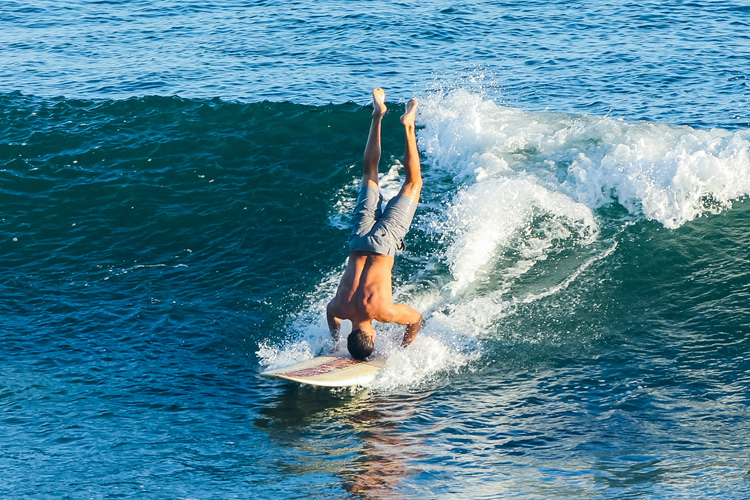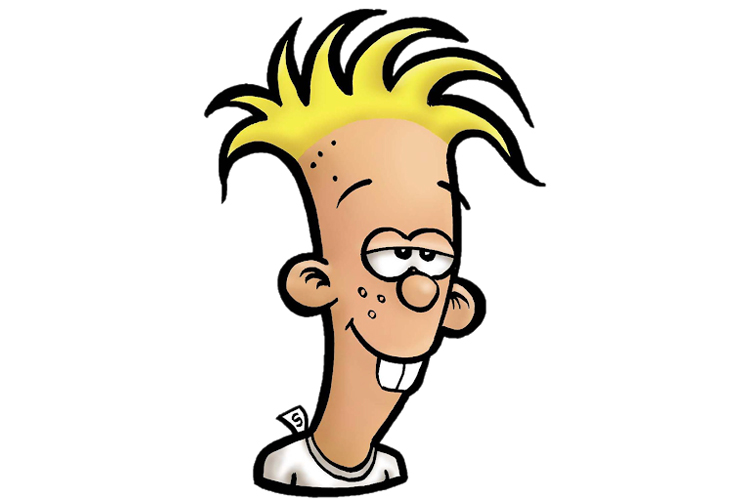Kook is a very popular expression in the surfing world. It defines a newbie that tries to mimic the surfer's lifestyle and skills in the water.
It's relatively easy to spot a wannabe surfer pretending to look and act like a pro and getting in the way of other wave riders.
However, the roots of the words are not exactly clear, precise, and unanimous, with etymologists and surf historians presenting diverging viewpoints.
The scientists of the history of words believe that the noun "kook" possibly derives from the cuckoo, the medium-sized bird that can be found on all continents.
Interestingly, and according to scientists, newly-hatched cuckoo chicks start to mimic the cries their foster parents' young make from the moment they hatch to get more food.
And you know what? The mimicry works.
Another thesis is that the word "kook" is an adaption of the Hawaiian expression kūkae, meaning "feces," and referring to local or foreign surfers lacking wave riding skills.
Meaningful Meanings
Several sources indicate that the now popular term was first used between the 1950s and 1960s.
According to language researchers and scholars, the word "kook" became a popular expression following the US TV series "77 Sunset Strip," in which a very eccentric character - Gerald Lloyd Kookson III (Edd Byrnes) - is nicknamed "Kookie."
The Oxford English Dictionary (OED) tells us that "kook" is an informal North American noun referring to "a mad or eccentric person."
In fact, several other respected, well-known dictionaries and lexicographers define kook with the following similar meanings:
- A crazy person;
- A strange, mad, or insane individual;
- An odd and foolish character;
- A weird or nut figure;
- A class clown;
- A queer bird or queer duck;
- An unusual fellow;
- A screwball;
- A pretender;
- A goon;

A Short History of Kookism
The word "kook" is one of the most popular terms among the surfing and skateboarding communities.
It is a derogatory expression applied to first-timers and clumsy beginner boardsports participants who try and fail to adopt the surfers' etiquette and lifestyle.
In surf slang, a kook is a poser or a pseudo-surfer who fails to behave and perform as expected by the tribe.
However, if an advanced or experienced surfer drops in on a fellow wave rider, violating the informal rules of the lineup, he could also be shouted down as a kook.
"Originally a Hawaiian slang expression, the surf-variant of 'kook' was probably first used by mainland surfers not long after World War II," notes Matt Warshaw in "The Encylopedia of Surfing."
In the 1940s, a kook box was the name given to the hollow surfboards or paddleboards used by lifeguards.
Also, when the surf leash was introduced by Pat O'Neill - son of the wetsuit pioneer Jack O'Neill - old school surfers mocked those using the ankle strap.
"Look! That one is wearing a kook cord," experienced surfers shout.
With time, the leg rope became a fundamental item in modern surfing, and the slang word slowly dissociated from the piece of gear.
In 1986, American comic strip illustrator Bob Penuelas introduced a cartoon character named Wilbur Kookmeyer in his Surfer Magazine strip "Maynard and the Rat."
Kookmeyer is the quintessential young beach bum who hangs with the cool guys, tries to impress the beach girls, and epitomizes what it's like to be a kook.

Kooks in Surfing
Today, the diminishing four-letter word does not necessarily apply to those who are merely learning to surf.
Its meaning has a sociological dimension that goes beyond the natural process of getting into the sport through practice, trial, and error.
A kook is a disrespectful and often dangerous person who doesn't know the rules of the waves. He or she is an ignorant, nerd, and careless surfer.
When a kook is all by himself, he looks and acts ridiculously stupid and awkward by pretending to be something he's not.
As a result, he is mocked and laughed at for his idiotic behavior in and out of the water.
For example, a kook will wax down the bottom and/or of the surfboard, paddle for waves with the fins facing up, exercise advanced surfing tricks on the beach, or wear goggles in the surf.
The examples are endless, highly creative, and extremely fun to watch.
Finally, it's important to stress that because the surfers' vocabulary is so vast and rich - "The Surfin'ary" is a must-have book - the word "kook" evolved and gave birth to several relevant variations and derived terms:
- Kookishness or kookiness (noun): the quality, condition, or state of being unusual in behavior or appearance, or kookish;
- Kook out (verb): to blow it or behave like a kook;
- Kookily (adverb): in a kooky way;
- Kookology (noun): the study and science of kooks;
- Kooky or kookie (adjective): odd, strange, or kook-like;
Whether you're using it in a broad or surf-related sense, there's a universal truth - a kook will always be the black sheep that stands out from a group.
The kook club is a large and ever-growing fraternity that can be spotted from a distance - just make sure it doesn't infect you.
